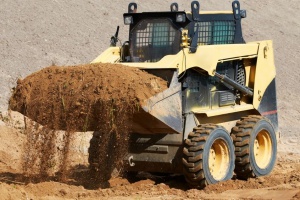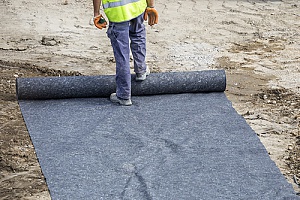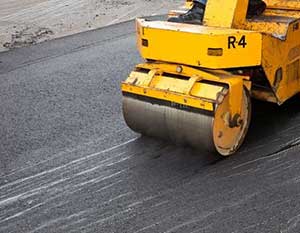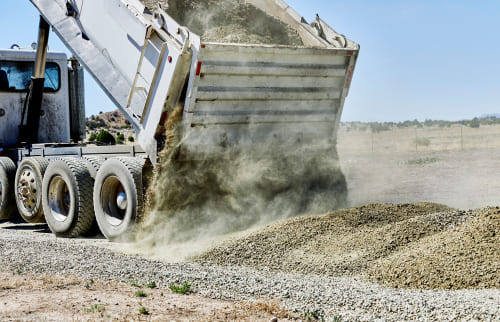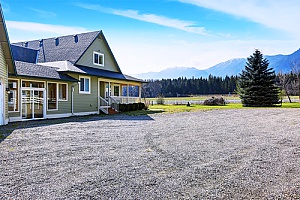 Gravel driveways are relatively simple to install and add great country character to those properties that put them in place. However, no matter how hard you work to protect them, heavy storms and other natural events will likely leave you to deal with potholes, depletion, erosion, and more. Don’t let these drawbacks keep you from installing gravel at your property. Gravel driveway repairs are possible by you the landowner or a professional.
Gravel driveways are relatively simple to install and add great country character to those properties that put them in place. However, no matter how hard you work to protect them, heavy storms and other natural events will likely leave you to deal with potholes, depletion, erosion, and more. Don’t let these drawbacks keep you from installing gravel at your property. Gravel driveway repairs are possible by you the landowner or a professional.
Gravel Material
Crushed gravel driveways are commonly composed of sand, silt, clay and larger aggregates (pebbles and small stones). Stone driveways, by contrast, are often more elegant. The source of the confusion over terminology is that the small stone used in stone driveways is sometimes also referred to as “gravel.”
Gravel Driveway Damage
You name the location. Whether city or country, every landscape erodes. Some erosion is obvious. You can see it, walk on it and drive on it. It can also be dangerous. If some erosion is not corrected and repaired, those people using it may get hurt. Keeping up with your gravel driveway repairs is a must.
Grading Attachments
- Box Scraper
- Land Leveler
- Drag Mat
- Tooth Harrow
- Harley Rakes
Crushed Stone
New Gravel Driveway
When building a new gravel driveway, it’s imperative that you take the time to ensure that your driveway is leveled properly. Leveling a driveway during this phase of development involves several steps and processes:
Excavation
Before you can begin introducing crushed stone and gravel to your driveway, you need to properly excavate the area. In order to be successful, you need to dig to the depths recommended by by your local experts or building department.
Remove all organic material from your new driveway area. This means that you need to dig and remove any all root systems, sticks or other materials. In addition, you will need to remove any stones that will impede future grading work.
Geotextile Fabric
A geotextile is typically defined as any permeable textile material used to increase soil stability, provide erosion control or aid in drainage. Geotextile fabrics are laid down on the earth and the crushed stone material is place on top.
Grading
You don’t want your gravel driveway’s base to be completely flat. This can lead to problems with pooling water and flooding. Your gravel driveway, should slope slightly away from your home and/or garage or a crown. This will prevent water from accumulating near your home or collecting on the driveway.
Compaction
After each layer of gravel has been placed on the driveway, you’ll need to use a tamping tool. A vibratory roller can compact the material thoroughly. This step is essential because it ensures that the layers will remain in place. This will minimize the effect of settling and shifting over time. This process will provide a better gravel driveway.
Raking
After everything else has been completed, you should go over the surface of your driveway and rake the gravel to a slight peak down the center line. This final phase of leveling will help to ensure that the surface has equal gravel coverage while also creating a path for water to follow in the event of rain.
Rolling
With the above steps complete, you should consider going over the driveway once more. The vibratory roller compaction will provide the final compaction of placed materials. This will help compress and stiffen all of the placed materials. This will extend the life of your new gravel driveway.
Gravel Driveway Contractor Near Me
Gravel Driveway Repairs
Over time, you’ll likely notice with regular usage, your gravel surface may become somewhat bumpy or uneven. This can happen for a number of reasons:
- Vehicle Traffic
- Traffic Volume
- Heavy Delivery Vehicles
- Trash Trucks
- Turning Radius & Area
- Snow Plowing
- Weather
- Water Run Off
These causes are unavoidable. They don’t have to create major headaches in your life. The process of leveling an uneven gravel driveway is simpler than you might imagine and can quickly restore your driveway to its former glory, both in terms of appearance and functionality.
Regular Maintenance
You don’t have to wait for the first signs of a gravel driveway problem. The process of leveling your gravel driveway with a box blade or other machine attachment. The traffic volume on your driveway will determine how often you should provide upkeep.
Grading your driveway regularly is the best way to avoid large scale problems. If you just have a few potholes, you could fill them by hand, but remember that this is a quick fix, and they will reappear pretty quickly. The long-term solution is to invest in regular maintenance with equipment attachments for improved gravel driveway repairs.
Pot Hole Repair
Potholes can wear tires and damage the wheel rims on your car. In some cases, you can jolt the steering system out of alignment. With a successful pothole repair you can avoid damage to your vehicle. Pothole spot repairs can be done:
- Open up the affected area.
- Fill the pothole with 21a compactable material.
- Compact the material using a steel tamper of 4 x 4 post.
- Add a small mound of grave to the top.
- Rake the pothole repair area and blend with the surrounding repair area.
Maintaining Your Gravel Driveway for Long-Term Durability
Regular maintenance is essential to preserving the longevity and appearance of your gravel driveway. Grading the driveway periodically helps prevent uneven surfaces and reduces the need for frequent repairs. Addressing potholes as soon as they appear by filling and compacting them with appropriate materials can prevent further damage. By staying proactive with upkeep, you can ensure that your gravel driveway remains functional and aesthetically pleasing for years to come.
Summary

Dirt Connections was started with one goal in mind: providing quality residential and commercial construction services to clients on time and on budget. Reach out for more information on how we can support your next project.
For your convenience our estimates are free and by appointment. Call 703-940-9949 for a free estimate today!

